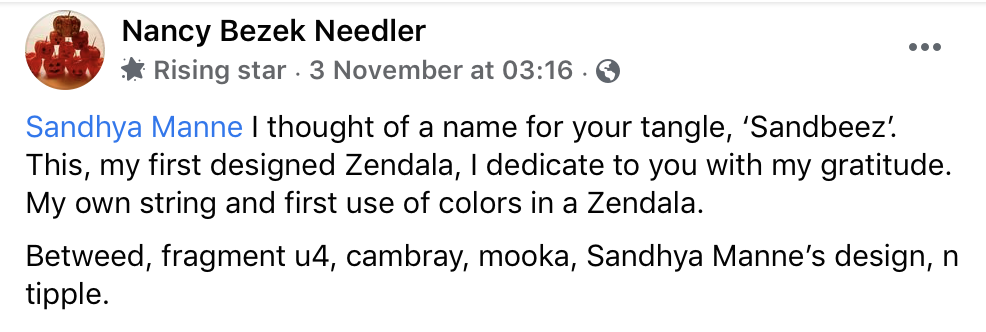Golden Temple – Amritsar, India
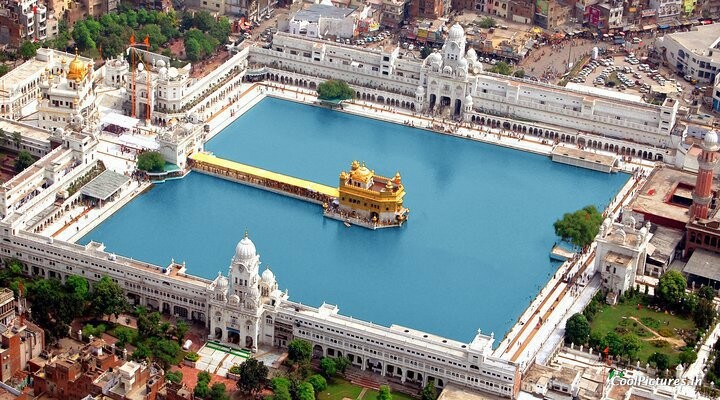
Ariel View of the Gurdwara
The Harmandir Sahib (or Hari Mandir) in Amritsar, Punjab, is the holiest shrine of Sikhism. Also known as the Golden Temple, the temple is a major piligrimage destination for Sikhs from all over the world. Harmandir Sahib literally means The Temple od God. The Mughal, Emperor Akbar, who visited the third Sikh Guru, Guru Amar Das, in the neighboring town of Goindal, was so impressed by the way of life in the town that he gave a jigar (the land and the revenues of several villages in the vicinity) to the Guru's daughter Bhani as a gift on her marriage to Bhai Jetha, who later became the fourth Sikh Guru.
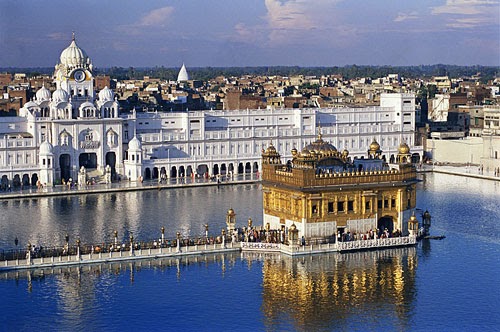
Main Temple surrounded by water..
The fourth guru of Sikhism, Guru Ram Das, excavated a tank in 1577 CE, which subsequently became known as Amritsar (meaning "Pool of the Nectar of Immortality"), giving its name to the city that grew around it. In December 1588, the fifth Guru Guru Arjan Dev initiated the construction of the Gurdwara. Thus, the Harmandir Sahib, rose in the middle of this tank and became the supreme center of Sikhism. Its sanctum came to house the Adi Granth comprising compositions of Sikh Gurus and other saints considered to have Sikh values and philosophies like Baba Farid and Kabir. The fifth guru of Sikhism, Guru Arjan Dev, started the compilation of The Adi Granth.
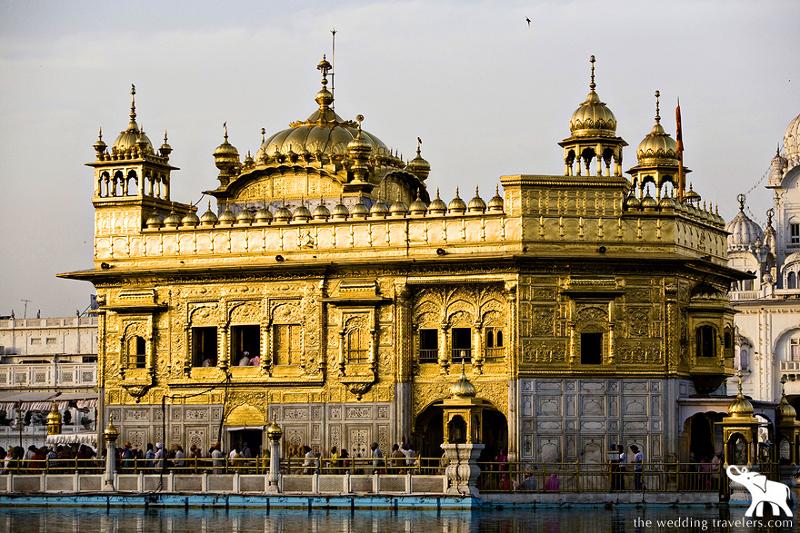
Close up shot of the Gurdwara..
Instead of the normal custom of building a temple on high land, the Gurdwara is built at a lower level than the surrounding land so that devotees would have to go down steps to enter it. In addition, instead of one entrance, Sri Harmandir Sahib has four entrancessymbolic of the new faith, which made no distinction between the four Hindu castes.
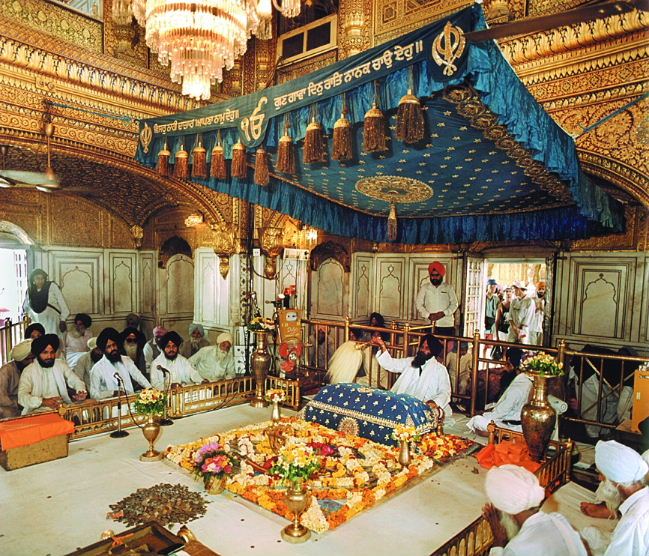
Inside the Gurdwara..Guru Granth Sahib
The Gurdwara was completed in 1604. Guru Arjan Dev, installed the Guru Granth Sahib in it and appointed Baba Buddha as the first Granthi (reader) of it on August 1604. In the mid 1700s it was attacked by the Afghans, and was substantially rebuilt in the 1760s.
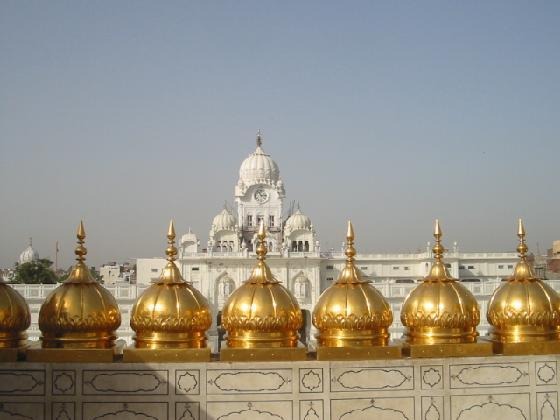
From the rooftop..
Much of the present decorative gilding and marble work dates from the early 19th century. All the gold and exquisite marble work was conducted under the patronage of Hukam Singh Chimni and Emperor Ranjit Singh, Maharaja of the Sikh Empire of the Punjab. The Darshani Deorhi Arch stands at the beginning of the causeway to Sri Harmandir Sahib; it is 202 feet (62 m) high and 21 feet (6 m) in width.
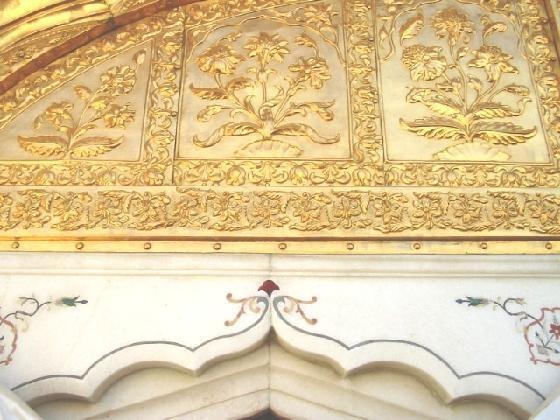
Gold and Marble..
The most famous and sacred part of the Golden Temple complex is the Hari Mandir (Divine Temple) or Darbar Sahib (Court of the Lord), which is the beautiful golden structure at the center of a large body of water. The gold-plated building features copper cupolas and white marble walls encrusted with precious stones arranged in decorative Islamic-style floral patterns. The structure is decorated inside and out with verses from the Granth Sahib (the Sikh holy book).
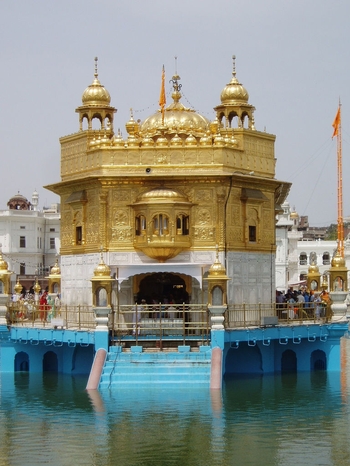
The rear view..
The water that surrounds the Hari Mandir is a sacred pool known as the Amrit Sarovar (Pool of Nectar). The temple is reached by following the Parikrama, which circumscribes the sacred pool in a clockwise direction. Connecting the pathway with the Hari Mandir is a marble causeway called the Guru's Bridge, which symbolizes the journey of the soul after death. The gateway to the bridge, the Darshani Deorhi, has magnificent silver doors.
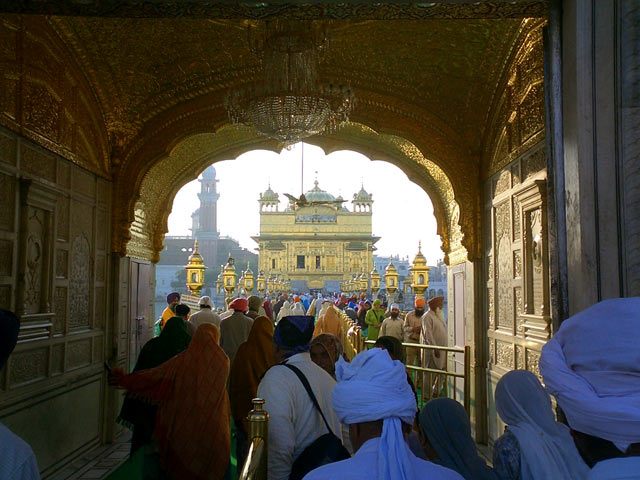
Archway on the western side of the pool opens on to the causeway
The main structure raises from the center of the sacred pool, 150 Meters Square, approached by a causeway about 60 meters long. An archway on the western side of the pool opens on to the causeway, bordered with balustrades of fretted marble, and, at close intervals, there are standard lamps. The lower parts of the Gurudwara are of white marble, but the upper parts are covered with gold plating. In the interior, on the ground floor, is the Guru Granth Sahib, placed under a gorgeous canopy, studded with jewels.
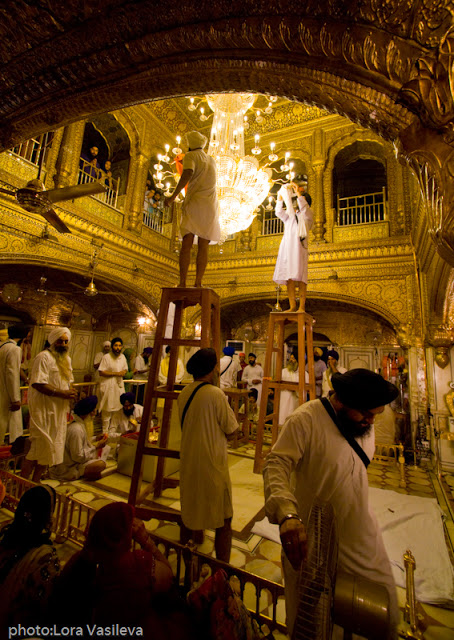
Cleaning inside the temple..
On the second storey is a pavilion known as Shish Mahal or Mirror Room, so designed as to have a square opening in the center to view from there the ground floor, with the further provision of a narrow circumambulatory around the square opening. The interior of the Shish Mahal is ornamented with small pieces of mirror, of various sizes and shapes, skillfully inlaid in the ceiling, and walls richly embellished with designs, mostly floral in character. Further above the Shish Mahal is again a small square pavilion, considerably small both at its base as well as in its elevation, surmounted by a low fluted golden dome, lined at its base with a number of smaller domes. The walls of the two lower storeys, forming parapets, terminate with several rounded pinnacles. There are four chhatris or kiosks at the corners. The combination of several dozens of large, medium and miniature domes of gilded copper create a unique and dazzling effect, enhanced by the reflection in the water below.
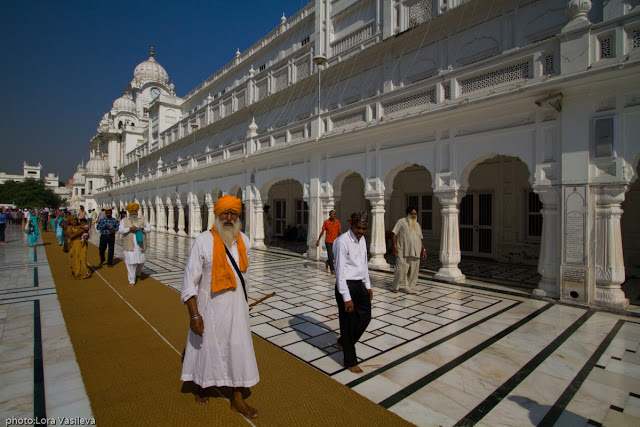
Around the water pool.
The fascinating scene inside the Hari Mandir is televised throughout India for Sikh viewers. Amidst a crowd of fervent and solemn devotees, scriptures from the Holy Book are sung beneath a canopy studded with jewels. A chauri (whisk) is continually waved above the Book as lines of Sikhs pay their respects by touching their foreheads to the temple floor and walls, continuing in a clockwise direction at a relaxed pace.
Another major highlight of the Golden Temple complex is the Guru-ka-Langar, a dining hall where around 35,000 people a day are fed for free by temple volunteers. Everyone is invited to join this communal breaking of bread. All participants sit on the floor, regardless of caste, status, wealth or creed, powerfully symbolizing the central Sikh doctrine of the equality of all people.
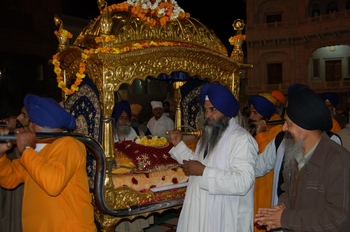
The Granth Sahib being carried in procession..
Every night, the Granth Sahib is carried in procession along this bridge to its "bed" in the Akal Takht, the seat of the Sikh parliament (built 1609). Called the Palki Sahib, this nightly ceremony provides a chance for all male pilgrims and visitors to actively participate in the veneration of the Holy Book. Lines form in front of and behind the heavy palanquin and each man shoulders the burden for a few seconds before passing it along, forming a human conveyer belt that allows everyone to participate and everyone to rest. The ceremony usually takes place at 11pm in summer at 9:30pm in winter.
sacred-destinations.com
vikaskhera.wordpress.com
wikipedia
sikhnet.com
Comments are closed.
































